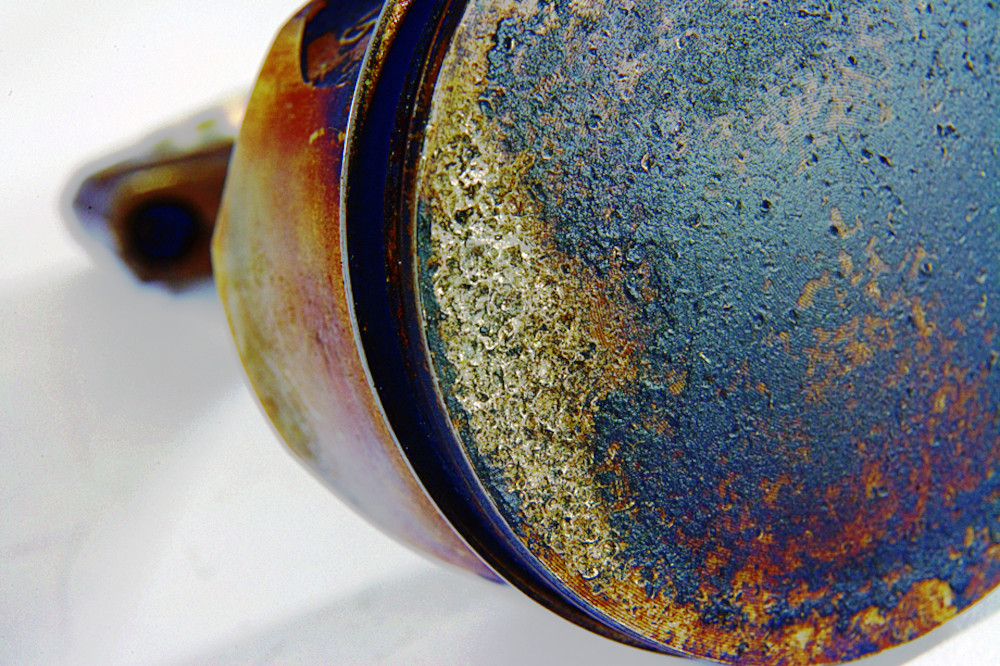Nothing causes engine failures more than an incorrect air fuel ratio (AFR). We show you why it happens and how to prevent it.
Talking about air fuel ratios isn’t the sexiest subject in car tuning. But it’s one of the most important! Put simply, it can be the difference between life and death for your engine.
But there’s no one-size-fits-all solution. What’s scientifically best? Which is best for fuel economy? Is there a best air fuel ratio for power? And finally, what’s best for your engine’s lifespan? All four scenarios are very different, and require different AFRs.
To complicate things further, they vary from engine to engine. Even the type of fuel used will affect the ideal air fuel ratio. The reality is you don’t need to be an expert, that’s the job of your tuner. But understanding the basics of air fuel ratios and acting earlier when something isn’t quite right could save your engine – and your wallet from an expensive repair bill!
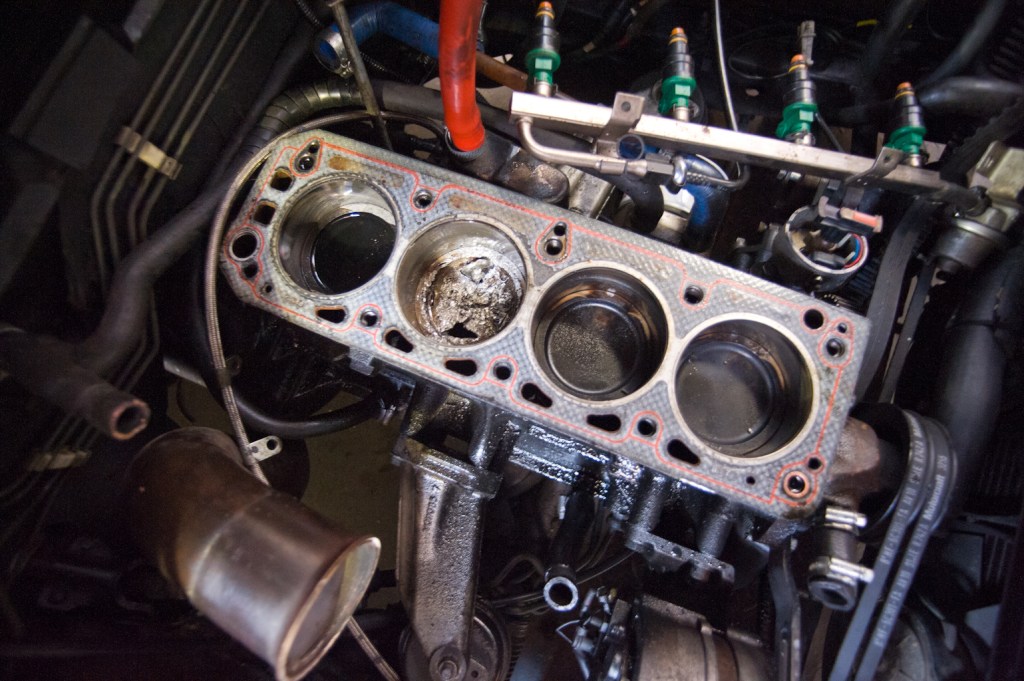
Poor AFRs kill parts
When parts break on your modified car, we often say they aren’t strong enough. But in reality, component parts and gaskets or seals rarely fail because they are weak. Instead, less-than-ideal AFRs are often the main culprit. Ever melted a piston? It’s not because the aluminium was too weak but because poor air fuel ratios have led to detonation and pre-ignition. Had a head gasket fail straight after tuning? It was working fine before, but again increased cylinder pressures and temperatures caused it to fail.
Don’t fall into the trap of thinking, “Oh I’ve blown a head gasket. I’ll get a stronger one to stop it from happening again.” Often, reliability issues continue because the root cause of the problem is detonation rather than weak or faulty components. Most cars can take around double the standard power on the original engine internals (some can do more like the famous 2JZ engine, and some can fail at stock power levels like the Mk3 Focus RS). But for any engine to last, the air fuel ratio must be correct. That is why ECU remapping is so crucial to get right.
Why can bad air fuel ratio kill my engine?
One word, detonation. Detonation is where the air and fuel mixture ignites on its own – without the aid of the spark plug. This happens when lean mixtures increase combustion chamber temperatures and pressures to a level that causes the fuel to spontaneously combust.
While in mild form this is fairly harmless, the severe detonation common when tuning cars is highly destructive. Detonation causes enormous cylinder pressures, far in excess of even what the highest boost pressures could give without detonation. This, at the very least, causes your head gasket to blow, melts your pistons, and ends your engine’s life.
This catastrophic failure can happen very quickly. Which is why head gaskets are often designed to be the weakest point in an engine. It’s a lot cheaper to fix the head gasket than it is to carry out a full bottom end rebuild!

What does lean or rich mean with air fuel ratio?
When someone says that a car is running lean or rich, this relates directly to the air fuel ratio. The ideal ratio is generally around 14.7:1. That’s 14.7 parts air for every 1 part of fuel. This the amount of air required for the complete combustion of the fuel, known as the stoichiometric mixture or Lambda 1.0. Anything that has more air (or less fuel) than this is considered lean, or a Lambda of greater than 1.0. While a ratio than has less air (or more fuel) is classed as a rich AFR or Lambda of less than 1.0.
Lean AFRs
If the air-fuel ratio is too high, it means there is excess air and not enough fuel. This is known as a lean mixture. In this case, the combustion process may not consume all the oxygen present, leading to higher combustion temperatures. This can result in engine damage due to overheating, misfires, and it can lead to detonation (or knock).
Rich AFRs
Conversely, if the air-fuel ratio is too low, it means there is excess fuel and not enough air. This is known as a rich mixture. In this scenario, not all the fuel is burned during combustion, leading to a waste of fuel and lower engine efficiency. The unburned fuel can also cause bore wash and oil dilution, or damage exhaust components such as catalytic converter. It’s also the reason you’ll fail the emissions test come MoT time.
The science behind air fuel ratio
As we’ve mentioned, the scientifically optimum mixture for normal petrol engines is 14.7:1. However, that doesn’t mean a car should run at that. For optimum fuel economy 16-17:1 is usually best – any leaner and the car will begin to misfire.
Maximum power is usually found between 12-14:1, but this may be too lean for safety on many engines. For maximum reliability at full power, air fuel ratios from 10.5-12.5:1 are considered best, depending on the engine. Richer than around 10.5:1 and you start to get noticeable black smoke from the exhaust. The car can also struggle to run properly without misfiring.
How does tuning affect AFRs?
Tuning complicates things further. Varying compression ratios, camshafts, boost pressures, and so on all affect the ideal air fuel ratio needed at any one point. This indicates the importance of having your car remapped as you add tuning components to it. To get a good overall car, you need to have a mixture of these AFRs. This should depend on how the car is being driven at any moment in time. Thankfully, that’s what modern fuel injection can supply you, provided the car has been mapped properly.
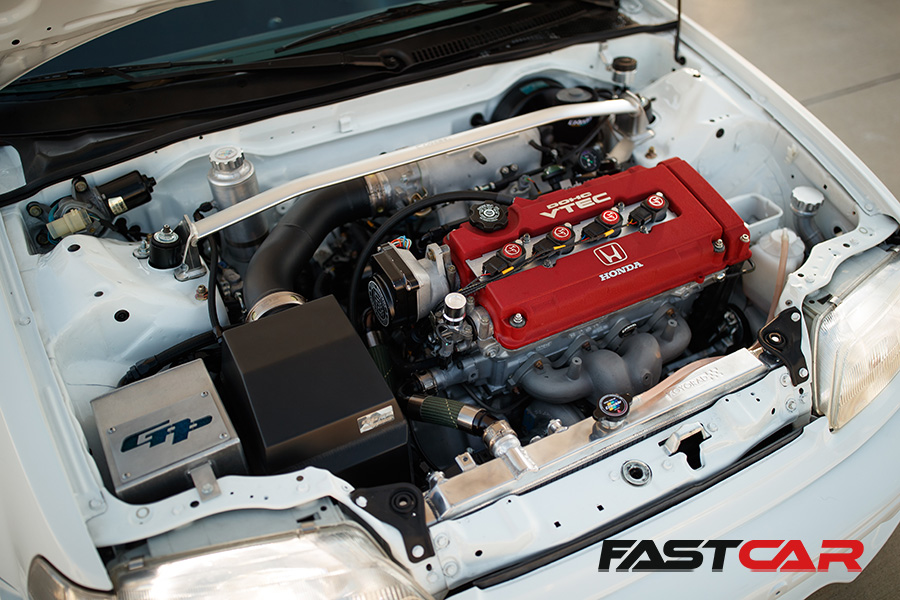
How do I tell if my air fuel ratio is safe?
The best way of knowing your AFR is safe is to go to a trusted and reliable tuner to get your tuning work done. What is safe on one engine isn’t necessarily on another. Enlisting the help of an expert to make sure things are safe is the most important thing here. It’s worth getting things checked every six months or so to make sure everything is still how it should be.
If you’re convinced you need an AFR meter, make sure it’s a wide band setup. A narrow band only tells whether it’s at 14.7:1, leaner than it, or richer than it. Considering in performance terms that even 14.7:1 is too lean for maximum safe performance, a narrow band sensor is useless.
My air fuel ratio is fine, does that mean my engine won’t blow up?
Truth be told, you can never be totally sure an engine won’t die. As long as your ignition timing isn’t wildly wrong and the motor is in good general health, having a safe AFR is the key to longevity.
Other issues; oil, cooling, and general strength of components can always destroy an engine. But the number one killer, especially among tuned turbo engines, is detonation due to incorrect air fuel ratios.
What will change my air fuel ratio?
Electronics fail on cars from time to time, that’s just a fact of car ownership. However, sometimes a sensor failure can have catastrophic effects on your engine. There are various sensors that affect fueling. But, the air flow, air pressure, and temperature sensors are the most likely to drastically affect your fueling. Failing in a manner that makes the car run rich means you should notice but no damage will be done. Failing and making the car run lean can end in disaster.
There is little you can do to stop this happening aside from sorting out any running issues the minute you notice them. However, getting your AFR checked every six months could indicate early signs of a problem. Changing sensors for upgraded versions, especially things like airflow and pressure sensors, will also cause lean running problems if the car hasn’t been remapped to suit.
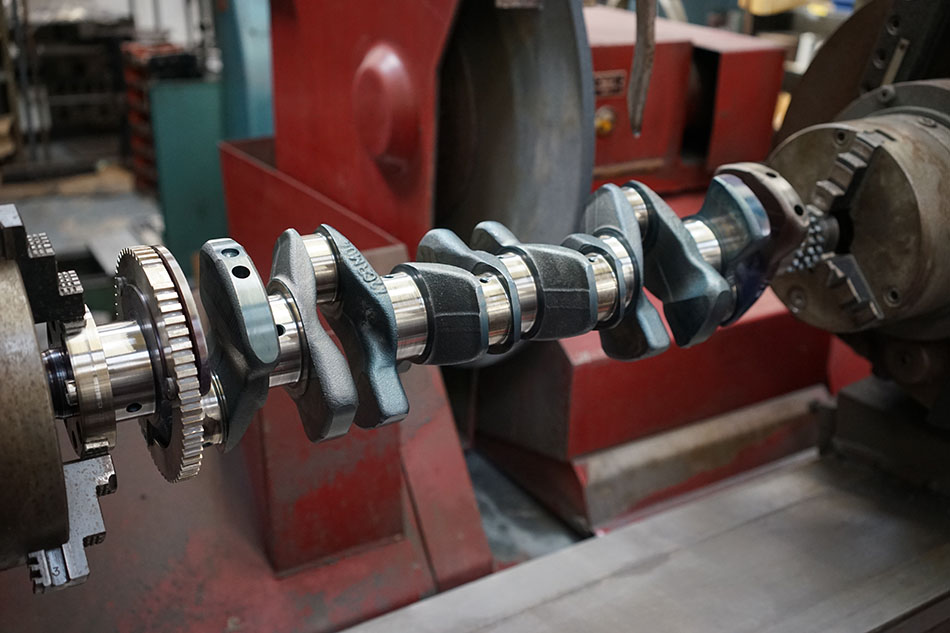
Camshaft changes
Changing to higher lift and longer duration cams lets your engine breathe more easily. This often means big fueling changes are needed not only to keep the engine safe, but to extract maximum performance from the cam. At high rpm, where the improved breathing gives noticeable power improvements, extra fuel is usually needed to prevent the car from running lean. But at low rpm, especially around idle, a richer mixture is often needed to keep drivability. Longer duration cams mean more fuel is wasted out of the exhaust at low rpm.
Fuel system problems
All components have their limits of capability, and when tuning engines you often hit the limit of what your fuel injectors, fuel pump, and even fuel lines and filter can cope with. Beyond their maximum flow rates, your engine will run lean and eventually fail. Age is another big factor with fuel systems, as they gradually get clogged up with dirt. Fuel pump wiring can also deteriorate, all of which will reduce flow. The final point worth mentioning is the vacuum pipe to the fuel pressure regulator, especially on turbo and supercharged engines. If this pipe splits or is removed, the engine will run incredibly lean on boost, and sometimes won’t survive a single full throttle run.
Fuel system changes
Fitting improved fuel system parts is vital on most cars tuned beyond the basic Stage 1 parts, but fitting them without the car being set up to suit can cause big problems. Installing bigger injectors without a suitable remap can cause the engine to massively over-fuel, which, while not causing instant death, isn’t good for economy or performance. The most potentially dangerous upgrade is the fuel pressure regulator, as you can be almost assured an upgraded replacement won’t be set for your correct pressure. While too much pressure is not a killer, too little equals lean running and a dead engine. Because of this, a fuel pressure gauge is a vital tool when replacing the regulator.
Exhaust changes
You may consider an exhaust to be a minor upgrade, but if it gives significantly more flow and performance, the car will need more fuel to stop the engine running dangerously lean. Some engines automatically compensate to some extent when making changes like this. But many cars, especially turbocharged ones, can run dangerously lean from a simple full exhaust system swap. This therefore would need a matching ECU remap to suit.
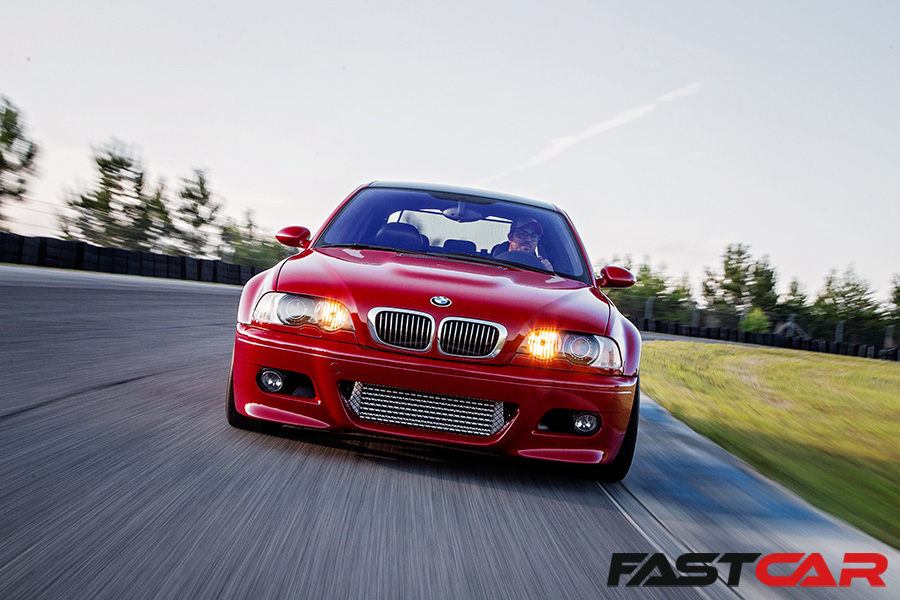
Improved intercooler
Cooler air may decrease the chances of detonation, but it’s also much denser and therefore feeds the engine with more oxygen. As a result, the engine would require more fuel not to run lean. Just like the exhaust, some cars will compensate for this and cause no problems, but some cars need a remap to compensate for the intercooler.
Bigger turbo
Even if your boost pressure is exactly the same, if you fit a larger turbo, you will be feeding your engine with a lot more air. Therefore, it can just as easily run lean and die as it would with a boost increase. The reason for this is a larger turbo not only gives cooler, denser air, but also lets a lot more air out the exhaust, which in turn lets more air in the cylinders. Without the extra fuel to compensate, yes, you guessed it, it will run lean, detonate, and the engine will fail.
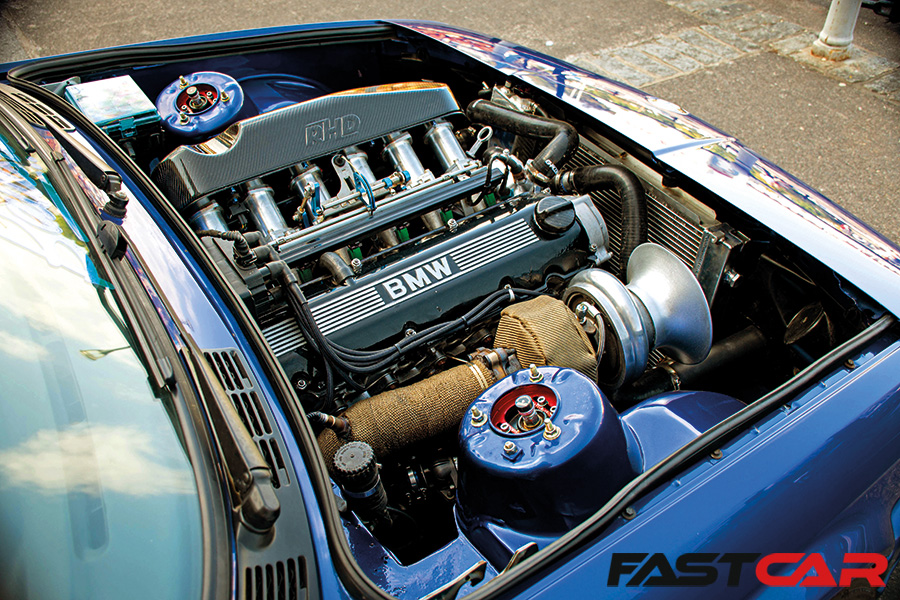
Boost pressure increase
This is the biggest cause of lean air/fuel ratios, and why many turbo cars have undeserved reputations for blowing head gaskets and melting pistons. Boost increases improve power and torque due to the subsequent large airflow increases, but without the corresponding increase in fuel the car will run dangerously lean and detonate. It’s not just the increased airflow that causes problems either, more boost pressure means higher air temperatures. With higher temps come an increase in the chances of detonation, making it a double edged sword.
Alternative fuels and air fuel ratio
Detonation is the main reason to worry about your air fuel ratio, but that is because normal pump fuels aren’t very resistant to it. While super unleaded is widely available at most pumps, its octane rating of 97-99 RON is fairly low, and a big part of the reason we have to run so rich, especially on turbo cars, to keep things safe.
Race fuel
Expensive and not available in your local petrol station, race fuel is generally reserved for track-only cars. It would need a remap to get the most out of it if you put it in your vehicle. It can be incredibly high octane (120+ RON quite often) and therefore very detonation resistant even with leaner mixtures, but you’d have to be rich to run your road car on it!
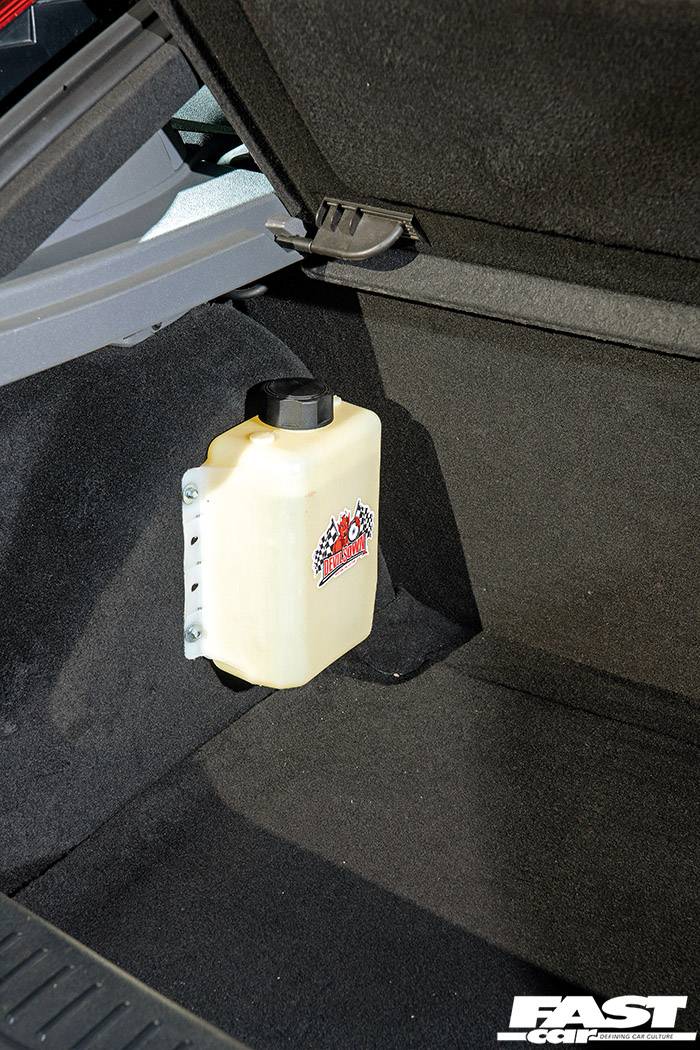
Methanol fuel
Only really viable for full race cars due to it’s highly toxic, corrosive and flammable nature. You will also need about four times the amount of fuel than you need running normal petrol. It’s popular for full drag cars as it’s incredibly detonation resistant, very cold, often negating the need for an intercooler, and contains a lot of oxygen itself, further increasing power.
E85 fuel
While mostly advertised as a cheap and environmentally friendly fuel, the main attraction of it to performance tuning fans is it’s around 106 RON, and therefore very detonation resistant. Similar to methanol, it needs extra fuel to run at peak performance, but at much more road-friendly levels, and is the performance fuel of choice.
LPG fuel
At about half the price of normal fuel, it’s mostly used to save money, but it has performance potential too. LPG is incredibly resistant to detonation, so with a system optimized for power, LPG has the potential to be used as a great fuel on big power turbo/supercharged engines.
Air fuel ratio in diesel engines
Diesel air fuel ratio issues are almost backwards to petrol, and it’s actually overly rich mixtures that cause problems. Lean is good for the health of a diesel engine, if not for the amount of power it produces. A diesel engine runs incredibly lean compared to a petrol engine regardless, and richer mixtures are actually the things that increase heat in the engine and lead to components failing.
Detonation is much less of an issue with diesels. In fact, the clattery noise in diesels is closely related to this. But, it isn’t damaging, apart from in certain situations where it’s incredibly severe, and unfortunately this is usually related, just like on petrol engines, to major tuning errors!


